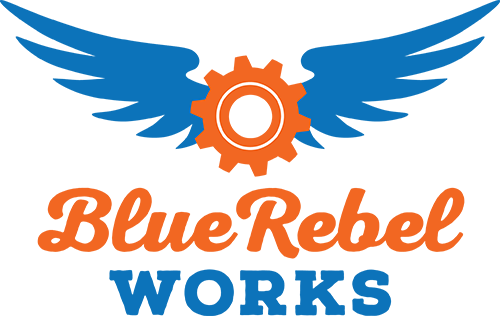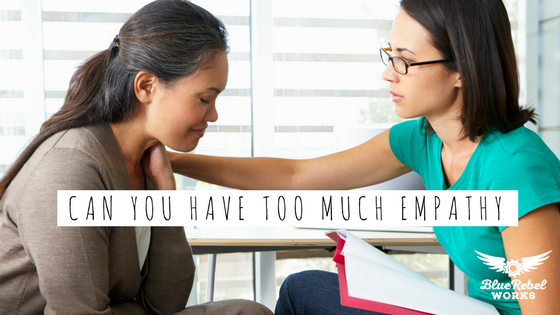I remember one of my first employee relations jobs. I was working in a particularly disengaged organization, listening to people’s problems all day, and coming home feeling exhausted, depressed and hopeless. One day, I remember pulling up to a location that had particular challenges, and sitting in my car crying before I went in to work on helping to solve them. Years later, I took Thomas International’s TEIQue assessment (which we now use in our leadership coaching and development programs) and realized that had a much higher tendency towards empathy than most people. In fact, my empathy level was in the 94th percentile. That means there is a distinct possibility of me overusing empathy and experiencing what psychologists would call “empathic distress.”
There is a Buddhist quote that reflects this experience and its impact:
“If a man going down into a river, swollen and swiftly flowing, is carried away by the current — how can he help others across?” – The Buddha
As a super-empathetic HR generalist, I was being swept into the river with my internal clients. I was taking on their pain and suffering as I listened to the various sides of different situations. I still partnered with people to discuss and work to reconcile their differences and move forward, but inside, I was taking their anguish on.
Compassion vs. Empathy
Over time I have continued to practice empathy, but I’ve realized the difference between empathy and compassion. While empathy refers more generally to our ability to sense the emotions and experience the perspective of another person, compassion provides a little bit of distance. Compassion adds emphasizes the desire to help.
When you experience empathy, there is an arousal response in the brain. That can lead to stress and cortisol release, which can lead to empathic distress. Or, especially with intentional practice, empathy can lead to an activation of the caregiving circuitry in the brain, and to a compassionate response.
How Mindfulness Can Help
Over the past few years, I’ve been exploring and practicing mindfulness and meditation with varying but increasing degrees of success. I’ll share more about my personal journey in the future (it’s been hugely significant for me), but for now, I’ll share one practice that researchers have found can help teach compassion.
Loving kindness meditation is a form of meditation that encourages you to cultivate warm, tender feelings that you have towards specific loved ones and to direct it towards yourself, to others, or to a broader group of people. The Greater Good Institute from Berkeley College (with whom I’m taking a fabulous course on the Science of Happiness) has an audio recording and explanation of this practice that you can try.
Psychologists have found that after training people in this sort of meditation and having them practice it daily for two weeks, it had a significant impact on their level of altruism towards strangers. They had one group practice this mediation and another group go through a cognitive training on how to reframe thoughts to be more positive. The two groups were then put into a game called the “redistribution game,” where they have to decide how much (if any) of their money they would like to give to someone in need. The meditation group was more likely to give more to the person in need, demonstrating higher levels of altruism and compassion. They also found greater differences in their brain arousal, with the parts of the brain responsible for empathy, understanding, and positive emotions, seeing increased activity.
Compassion in Leadership
In the leadership world, compassion can feel uncomfortable and can be quite courageous. We see compassion being the ability to empathize with your team when they are experiencing difficulty, and then to push them forward compassionately. If we get stuck in empathy, we can start to suffer with our people. Rather than that, our job as leaders is to push ourselves and our team members forward. Our job as leaders is to realize that our situation does not equal our outcome. Our job as leaders is to manage our mindset and our response to our circumstances and to develop our people to do the same.
One of the questions we ask leaders in coaching, and that we encourage them to use with their team members, is:
“if you were being the leader you really want to be, what would that look like in this situation?”
Questions like this force the person to reflect on their own behaviour and how they may be adding to their challenges. It forces them to take some accountability for their response. It encourages them to start to explore alternatives for their actions, that are in alignment with their values and the person they want to be.
It can feel uncomfortable to push people when they are experiencing challenges, but this is when the distance that compassion provides is critical. As one of my favourite Leadership speakers, Cy Wakeman, says, “Pain is inevitable but suffering is entirely optional.”
By going beyond empathy to practice compassion for ourselves and others, we can lead them better and develop better leaders throughout our team.


Recent Comments